How to see tonight's conjunction of Venus and Mars in the evening sky
Tuesday, 13 July 2021 12:55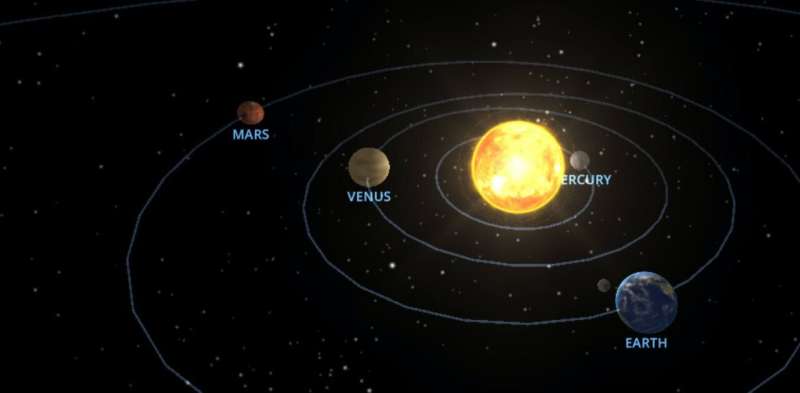
Venus has returned to our evening skies and is looking lovely in the north-west after sunset. Tonight, July 13, it will pair up with the red planet Mars and just above the two planets will be the waxing crescent Moon.
Wherever you are in Australia, find a location that has a good view of the north-west horizon to see the conjunction. Venus will be visible during dusk, but you need to wait until the sky darkens to have a chance to see faint Mars.
Mars will appear just above and to the left of Venus. The best viewing opportunity will be from about 6:30pm , with the planets setting an hour later.
Venus is dazzling, so it is easy to see why it's known as the "evening star." Just look towards the north-west horizon after sunset and you can't miss it.
Mars, on the other hand, is looking fairly faint. The red planet has been in the north-west sky for the past few months and while it was bright and red earlier in the year, it has been fading quite considerably as its orbit takes it away from Earth.
NASA's Mars helicopter reveals intriguing terrain for rover team
Tuesday, 13 July 2021 12:50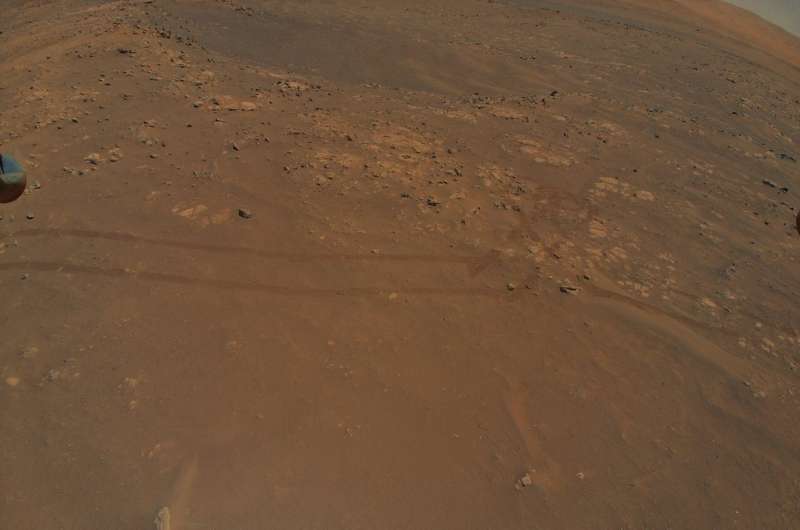
Images snapped on July 5 by NASA's Ingenuity Mars Helicopter on its ambitious ninth flight have offered scientists and engineers working with the agency's Perseverance Mars rover an unprecedented opportunity to scout out the road ahead. Ingenuity provided new insight into where different rock layers begin and end, each layer serving as a time capsule for how conditions in the ancient climate changed at this location. The flight also revealed obstacles the rover may have to drive around as it explores Jezero Crater.
NASA moves ahead with plan to support private space stations
Tuesday, 13 July 2021 12:01 NASA is moving ahead with plans to help fund a new generation of private space stations in an effort to ensure replacements are ready when the International Space Station shuts down in as little as seven years.
The space agency on Monday released a final request for proposals for new space stations. Those proposals are due Aug. 26.
NASA intends to retire the 20-year-old ISS in 20
NASA is moving ahead with plans to help fund a new generation of private space stations in an effort to ensure replacements are ready when the International Space Station shuts down in as little as seven years.
The space agency on Monday released a final request for proposals for new space stations. Those proposals are due Aug. 26.
NASA intends to retire the 20-year-old ISS in 20 Ingenuity Mars helicopter photos show latest flight area
Tuesday, 13 July 2021 12:01 Photos from the Mars helicopter Ingenuity's ninth flight released by NASA on Monday are helping engineers and scientists plot the next destinations for the Perseverance rover.
The aircraft was sent toward some possible science targets for the mission, flying over a sandy dune area known as Séítah that might be hazardous for the rover.
The photos showed the dunes and rocky outcr
Photos from the Mars helicopter Ingenuity's ninth flight released by NASA on Monday are helping engineers and scientists plot the next destinations for the Perseverance rover.
The aircraft was sent toward some possible science targets for the mission, flying over a sandy dune area known as Séítah that might be hazardous for the rover.
The photos showed the dunes and rocky outcr NASA grapples with Hubble Telescope's most serious problem in years
Tuesday, 13 July 2021 12:01 NASA's Hubble Space Telescope is broken, and the agency is struggling to understand the workhorse observatory's most serious problem in more than a decade.
Hubble stopped working suddenly June 13 while astronomers were using the 31-year-old telescope to examine pulsating stars 200 million miles away.
NASA is trying to understand what went wrong on the orbiting telescope, without
NASA's Hubble Space Telescope is broken, and the agency is struggling to understand the workhorse observatory's most serious problem in more than a decade.
Hubble stopped working suddenly June 13 while astronomers were using the 31-year-old telescope to examine pulsating stars 200 million miles away.
NASA is trying to understand what went wrong on the orbiting telescope, without Digital corrections for Sentinel-1 satellite images
Tuesday, 13 July 2021 12:01 Researchers at the German Aerospace Center Earth Observation Center (EOC) have developed a correction procedure for the radar satellites of the European Sentinel-1 mission. With this methodology, the geographic location of satellite measurements can be determined with significantly greater accuracy. Every pixel can be localised on Earth's surface with a precision of a few centimetres instead of
Researchers at the German Aerospace Center Earth Observation Center (EOC) have developed a correction procedure for the radar satellites of the European Sentinel-1 mission. With this methodology, the geographic location of satellite measurements can be determined with significantly greater accuracy. Every pixel can be localised on Earth's surface with a precision of a few centimetres instead of Study Projects a Surge in Coastal Flooding, Starting in 2030s
Tuesday, 13 July 2021 12:01 High-tide floods - also called nuisance floods or sunny day floods - are already a familiar problem in many cities on the U.S. Atlantic and Gulf coasts. The National Oceanic and Atmospheric Administration (NOAA) reported a total of more than 600 such floods in 2019.
Starting in the mid-2030s, however, the alignment of rising sea levels with a lunar cycle will cause coastal cities all aroun
High-tide floods - also called nuisance floods or sunny day floods - are already a familiar problem in many cities on the U.S. Atlantic and Gulf coasts. The National Oceanic and Atmospheric Administration (NOAA) reported a total of more than 600 such floods in 2019.
Starting in the mid-2030s, however, the alignment of rising sea levels with a lunar cycle will cause coastal cities all aroun An antioxidative stress regulator protects muscle tissue in space
Tuesday, 13 July 2021 12:01 Most kids dream of growing up to be astronauts; but the downside of spending extended amounts of time in low gravity is that astronauts' muscles tend to shrink and weaken through disuse. Now, researchers from Japan have identified a protein that affects how muscles respond to space flight.
In a study published in June 2021 in Communications Biology, researchers from the University of Tsuku
Most kids dream of growing up to be astronauts; but the downside of spending extended amounts of time in low gravity is that astronauts' muscles tend to shrink and weaken through disuse. Now, researchers from Japan have identified a protein that affects how muscles respond to space flight.
In a study published in June 2021 in Communications Biology, researchers from the University of Tsuku Eutelsat Quantum: Europe’s reprogrammable satellite
Tuesday, 13 July 2021 11:00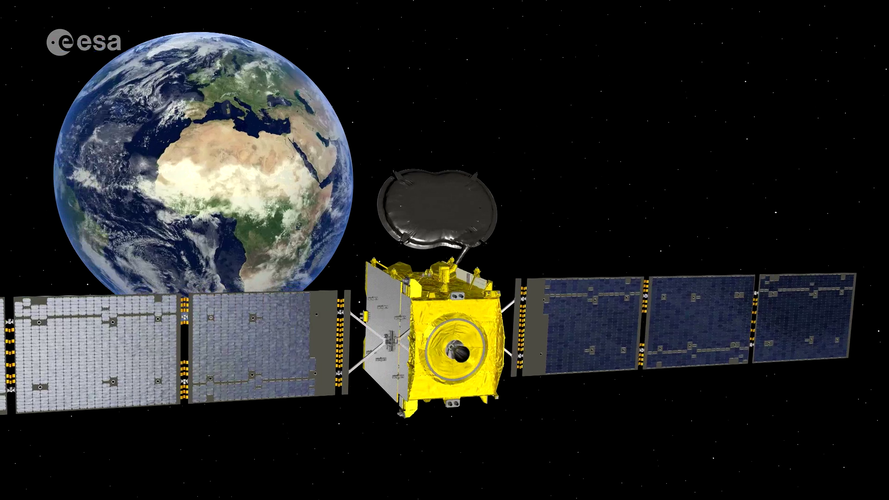 Video:
00:04:12
Video:
00:04:12
Soon Eutelsat Quantum will be launched into a geostationary orbit on board an Ariane 5 from Kourou. This advanced telecommunications satellite is revolutionary as it offers its users the ability to reconfigure the satellite while in orbit. This offers a previously unknown degree of flexibility during its 15-year lifetime. It allows for satellites of this type to be mass-produced, making them extremely interesting for commercial parties and industry. The satellite was developed as an ESA partnership project with operator Eutelsat and prime contractor Airbus working together with ESA to share the risk of developing this innovative piece of technology.
Germany launches 'space command' to protect infrastructure
Tuesday, 13 July 2021 10:44
The German military on Tuesday launched a "space command" tasked with overseeing satellites, watching for dangerous space junk and analyzing other countries' activities.
Defense Minister Annegret Kramp-Karrenbauer launched the new operation during a visit to its base at Uedem in western Germany.
The military is "responding to the increasing significance of space for our state's ability to function, the prosperity of our population and the increasing dependency of the armed forces on space-supported data, services and products," Kramp-Karrenbauer's ministry said in a statement.
The aim is to bring together existing capabilities in one place, where the military's center for air operations is already based, and add new ones.
Kramp-Karrenbauer said that the term "Weltraumkommando," or "space command," might draw far-fetched associations with the novels of Jules Verne or starship Enterprise, but the reality is "far from being so sensational," news agency dpa reported.
The German military, or Bundeswehr, itself has six satellites in orbit. The minister said space operations for Germany "are always defensive operations"—for example to ensure that infrastructure isn't endangered.
The United States already has a Space Command, whose role is to conduct operations such as enabling satellite-based navigation and troop communication and providing warning of missile launches.
Richard Branson's flight sparks new optimism in New Mexico
Tuesday, 13 July 2021 06:00
With Virgin Galactic making its highest profile test flight to date with boss Richard Branson aboard, it's only a matter of time before paying customers get their chance and New Mexico realizes a dream that has been decades in the making.
Former Gov. Bill Richardson is among those who have been watching the progress of the space tourism company, ever since he and his team recruited the British billionaire to New Mexico.
NASA Lucy mission's message to the future
Tuesday, 13 July 2021 05:06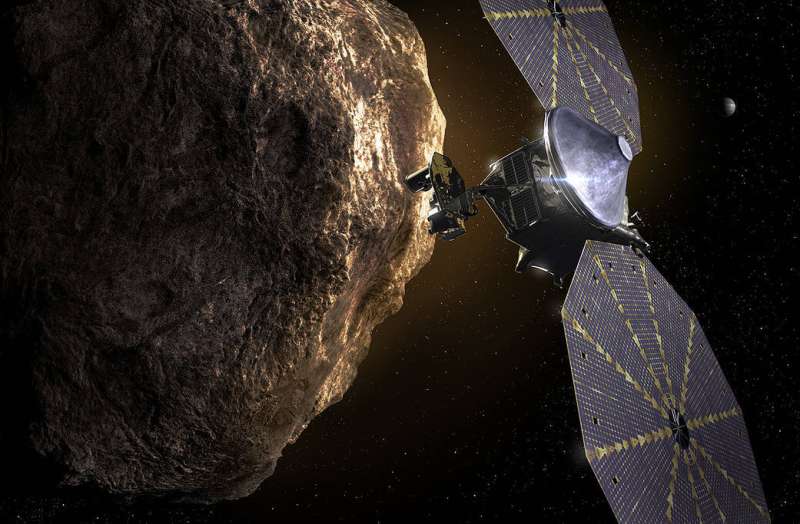
In the 1970s four spacecraft began their one-way trips out of our Solar System. As the first human-built objects to ever venture into interstellar space, NASA chose to place plaques on Pioneer 10 and 11 and golden records on Voyager 1 and 2 spacecraft to serve as messages to any alien spacefarers that may someday encounter these spacecraft. Continuing this legacy, NASA's Lucy spacecraft will carry a similar plaque. However, because Lucy will not be venturing outside of our Solar System, Lucy's plaque is a time-capsule featuring messages to our descendants.
As the first-ever mission to the Trojan asteroids, Lucy will survey this enigmatic population of small bodies that orbit the Sun beyond the main asteroid belt—trapped by Jupiter and the Sun so that they have led and followed Jupiter in its orbit. As these never before explored asteroids are in many ways "fossils" from the formation and evolution of the planets, the Lucy spacecraft is named in honor of the fossilized human ancestor discovered the year after Pioneer 11 began its journey out of the Solar System.
House appropriations bill supports increase to NASA’s budget
Monday, 12 July 2021 22:47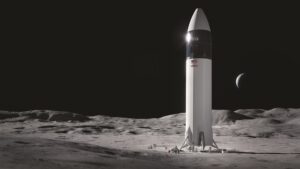
WASHINGTON — A House appropriations subcommittee advanced a spending bill July 12 that would provide NASA with a small increase over what the administration proposed for fiscal year 2022, but does not address some key areas of concern.
Missile Defense Agency confirms deployment of cubesats launched by Virgin Orbit
Monday, 12 July 2021 20:08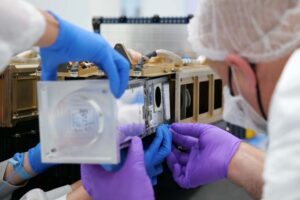
WASHINGTON — Two Missile Defense Agency cubesats launched June 30 aboard Virgin Orbit’s LauncherOne successfully began communicating with ground stations last week, the agency announced July 12.
The satellites are the first of a series of network communications experiments planned by MDA to demonstrate mesh networking in space and satellite-to-ground links.
Spacecom extends AsiaSat satellite leasing deal
Monday, 12 July 2021 14:57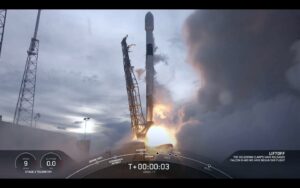
TAMPA, Fla. — Israeli fleet operator Spacecom has secured an extension to use AsiaSat-8 until 2024, filling a coverage gap left by the loss of its Amos-6 satellite in 2016.
The company agreed to lease Hong Kong-based AsiaSat’s satellite, which it calls Amos-7, for an extra two years for an annual fee of $14 million.

